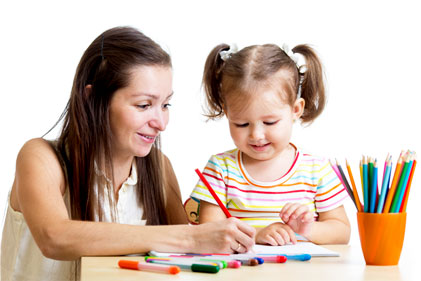Parenting looks a lot different these days… children are attending school virtually, parents are working from home, and play-dates are a thing of the past. We have the current worldwide pandemic to thank for that. Despite all these changes, however, one thing remains the same: children need to be entertained. As if parents weren’t already juggling a hundred things, they are now expected to entertain their children all day while working and balancing household chores.
What if I told you there was a way to teach your children to entertain themselves by playing independently? Would you be interested in learning more? If your answer is yes, then keep reading.
Fill Up Their Tank
Spend one-on-one time with your children shortly before having them play on their own; think of it as filling up their tank with attention. Generally, 15-minutes of one-on-one attention should fill up your child’s tank for about 45-minutes according to Jennifer Keys Adair, a professor of early childhood education at UT Austin. Initially, have your children play independently for a small amount of time, about 3-5 minutes. This will help set them up for success and allow them to access reinforcement, in the form of your attention, more frequently. Then, you can gradually increase the increment of time by 3-5 minutes, as they are successful. If they have difficulty, reduce the time by 3-5 minutes and then increase more gradually. You want them to be successful as often as possible so they get a lot of practice doing it right.
 Set Them Up With “Open-Ended” Activities
Set Them Up With “Open-Ended” Activities
If a child has never really been expected to play on their own before, they may require some guidance and inspiration to get started. While you are filling up their tank, try to get them started on an activity of their choice that doesn’t have a clear ending. For example, help them build a fort or a city of blocks as opposed to playing a board game. These activities promote creativity and allow for endless possibilities, keeping them busier for longer.
Remain Within Earshot but Out of Eyesight
You want to remain nearby but out of the way. Children feel more comfortable knowing their parents are close by but often become distracted by their presence. If they can see you they will want to play with you. Keeping the greatest distance possible while still being able to monitor their safety is ideal. Additionally, try your best not to interrupt or be interrupted. If they are playing nicely and safely, leave them alone as much as possible. Alone time helps build focus, creativity, and independence. Likewise, try not to be interrupted by them. If they’re asking for another toy or requesting attention, communicate to them that you are busy and will attend to them in a few minutes. This helps them understand that mom and dad are not always available and teaches them to be content with the toys they have access to.
Remember Messy Homes Mean Happy Kids
Unfortunately messes are inevitable, especially when children are left up to their own devices. If they are playing independently, reward that behavior rather than reprimanding them for the mess they are making. Your goal is to make this experience enjoyable for them so that they are more likely to want to play independently in the future. Of course, use your judgment; having toys sprawled out all over the living room is okay but drawing on the walls is certainly not.
Try to Restrict Screen Time During Independent Play Time
Screen time doesn’t count as playing independently and shouldn’t be used as a substitute for learning to play alone. Although screen time definitely serves a purpose and can be a useful tool for parents, it is generally a passive activity that does not require or promote creativity. Most children, especially those younger in age, need to be actively moving their bodies and being hands-on to be fully engaged in an activity. Try using a scene from their favorite movie or television show to base open-ended play activities off of to bridge the gap between screen time and independent play.
Above all else always remember you’re a great parent and you’re doing an awesome job!
Looking for more structured ways to improve independent play? Contact us to get more information on what services are right for you.
Resources
Kamanatz, A. & Turner, C. (2020, June 22). Kids know how to occupy themselves. We need to let them do it. NPR.org. https://www.npr.org/2020/06/18/880584874/kids-know-how-to-occupy-themselves-we-need-to-let-them-do-it













